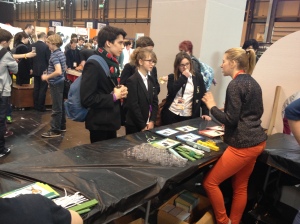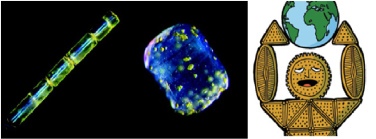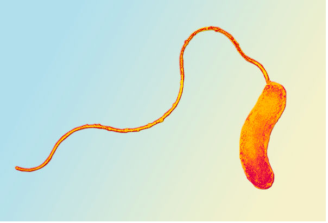I ended up taking an extended hiatus from blogging, but now that I’m back, I plan on being back with a vengeance.
During my blogiday / blogcation / sabblogical (?) I wasn’t not doing science-y things, in fact it was quite the opposite; I volunteered at the Big Bang Fair, a microbiology science roadshow and the Cheltenham science festival, joined a forum for young people at the Thintank science museum in Birmingham, began and completed my dissertation, finished uni and graduated with first class honours in Human Biology!
Good news, lucky readers, over a series of blog posts I plan on telling you ALLLLLLL about it!
First up, the Big Bang Fair (BBF)
The BBF is a completely free four day event held every March, that aims to promote young people’s interest in science, engineering, technology and maths (STEM) qualifications and careers. Hundreds of exhibitors attend the fair from academia, government, business and industry, including GlaxoSmithKline, NHS, Jaguar Land Rover and the Royal Air Force.
This year the BBF was held at the NEC in Birmingham (exceptionally handy for me, studying in Birmingham and all).

My exhibitor/ green room entitlement pass
The first two days of the fair are mainly aimed at school groups and I spent both of these days volunteering on the Society for General Microbiology stand making plasticine models of three microbiological superheroes; Diatoms, Bdellovibrio and Nematophagous fungi
– Diatoms are algae that are capable of forming complex silica frustules around themselves, which look a lot like incredibly intricate geometric glass shells. Diatoms can photosynthesise and are responsible for around 20% of the Earth’s carbon fixation and oxygen production.
– Bdellovibrio are a genus of bacteria that parasitize other bacteria by sensing them in the local environment and rapidly swimming towards them at speeds equivalent of a human swimming at 400mph. Upon reaching its prey, the Bdellovibrio coils its tail up and uses it in a corkscrew motion, burrowing its way inside the other bacteria.
Once inside its prey, the Bdellovibrio releases enzymes that break down the other bacteria’s cellular contents and uses this as a food source, resulting in the prey essentially being eaten inside out. When the Bdellovibrio is unable to grow any further inside its host, it splits into several smaller Bdellovibrio bacteriums that subsequently burst out of the host into the local environment becoming predators themselves.
Despite their seemingly barbaric predatory mechanism, Bdellovibrio could be beneficial as antimicrobial agents for oral infections, general medical conditions, environmental and industrial issues.
– Nematophagous fungi predate on nematodes, a type of worm, by abusing nematode’s blindness and reliance on finding food through their sense of smell by releasing a chemical that is attractive to the nematode, causing the nematode to rapidly swim towards the fungus.
Sadly for the nematode, the supposed food source is nothing but a lair and adhesive traps on rings protruding from the fungus strongly adhere to the nematode and trigger the ring to snap close, like a noose around a neck, crushing the nematode and inciting its death.
Similarly to the Bdellovibrio, species of nematophagous fungi have potential biological applications with studies investigating the use of these fungi as an alternative to nematode parasite control in agriculture.
My third and final day of the Big Bang Fair 2014 was spent volunteering with the festival itself inside one of the arenas, enabling me to be able to watch Stefan Gates’ ‘Gastronaut’ and Greg Foot’s ‘Kaboom!’ shows.
In a true Greg and Stefan fashion, both shows were very explosion heavy; check out my video of one of the more tame explosions from Gastronaut!

 A. Big Bang Volunteers after Kaboom! with Greg Foot and Amy Adams. (Spot me next to Greg) B. Preparing to launch 30+ huge inflatable balls into the audience, obviously
A. Big Bang Volunteers after Kaboom! with Greg Foot and Amy Adams. (Spot me next to Greg) B. Preparing to launch 30+ huge inflatable balls into the audience, obviously
Read more about the microbiological superheroes mentioned here plus more in February’s issue of Microbiology Today, available for free here.




